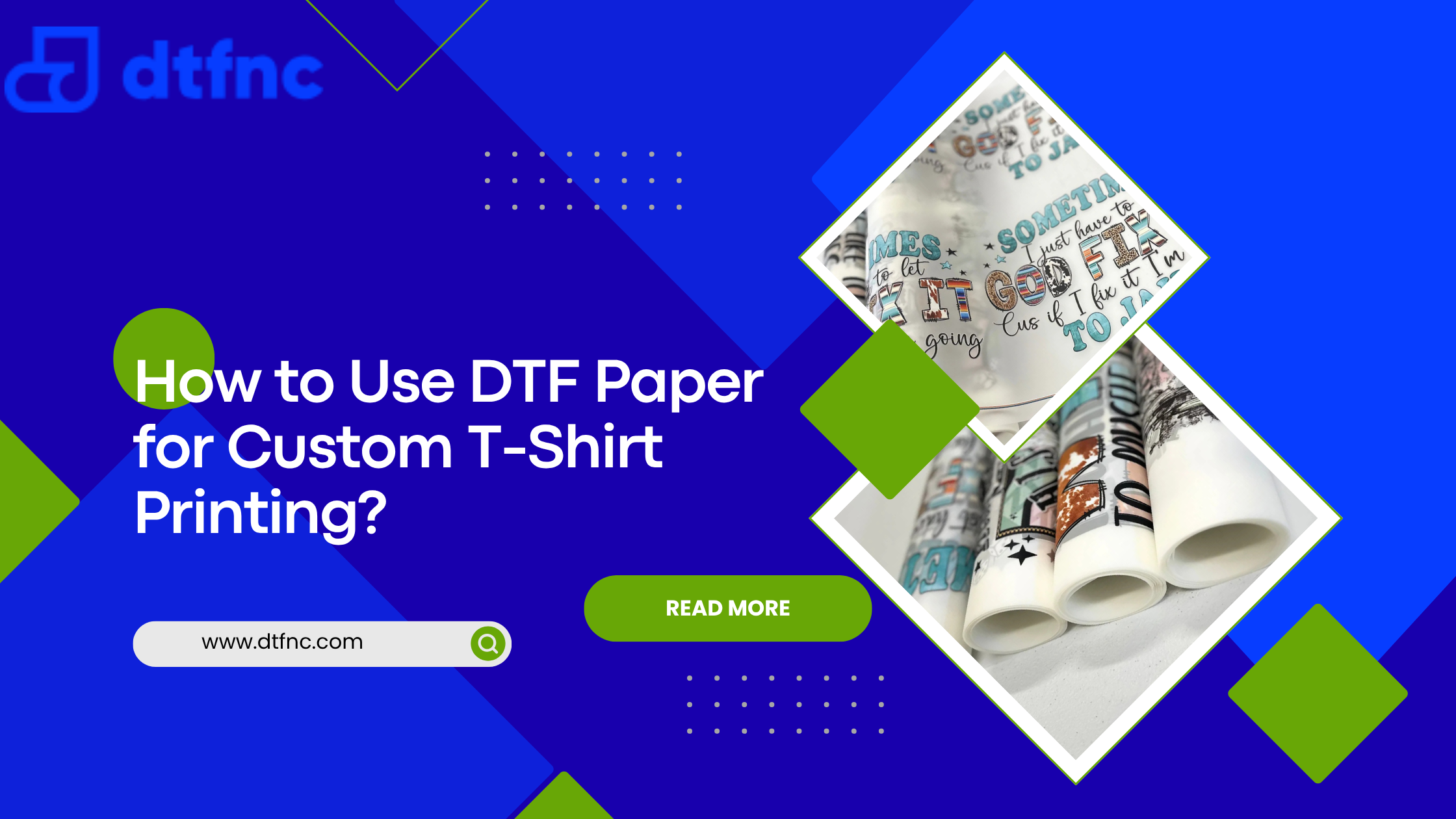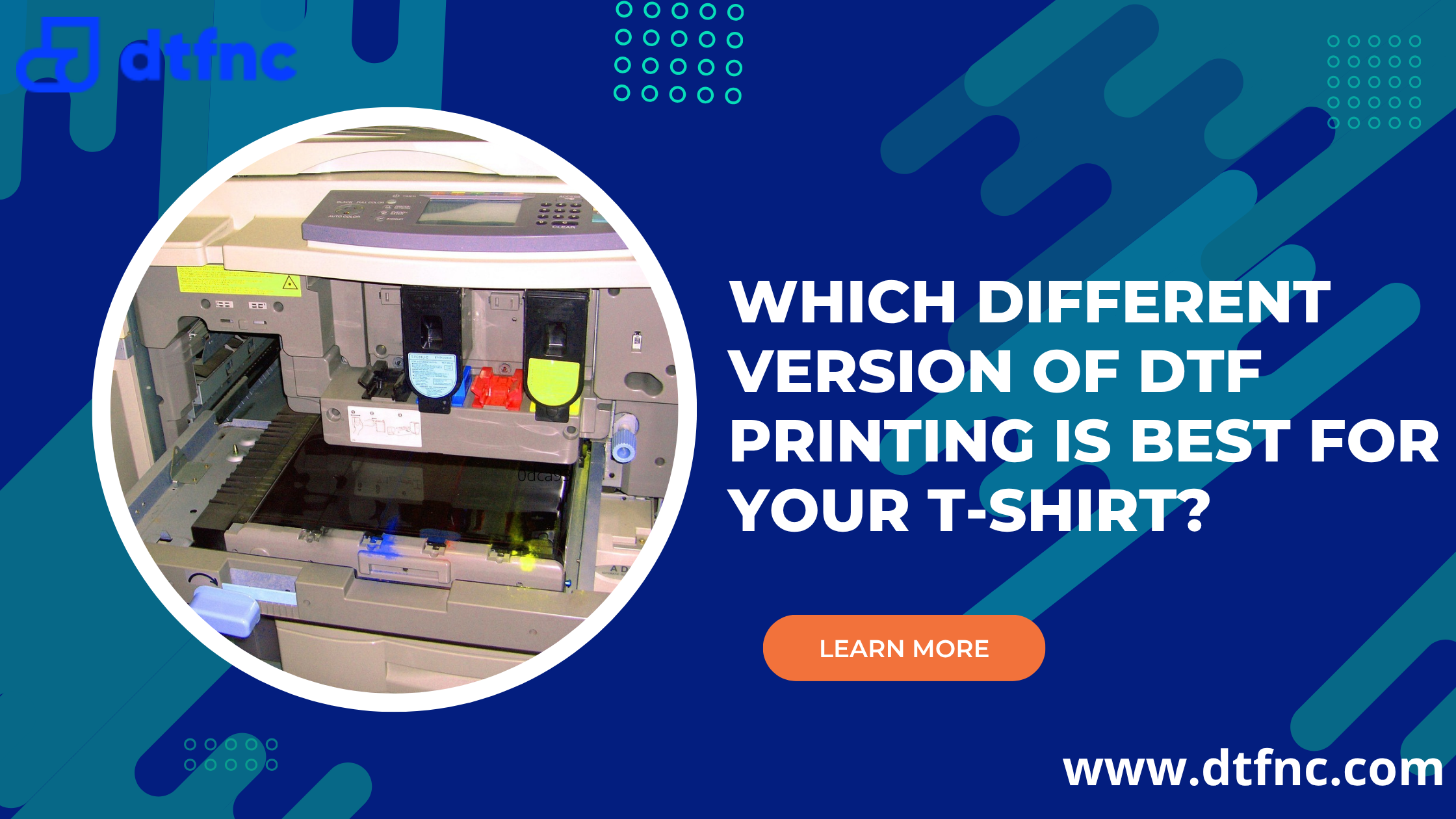In the evolving landscape of custom apparel, DTF printing has emerged as a game-changer for creating personalized t-shirts with vibrant designs and lasting quality. If you're wondering what is DTF printing or what's DTF printing, it's a method known as Direct-to-Film, where designs are printed onto a special film using pigment inks, coated with adhesive powder, and then heat-transferred onto fabric. This technique stands out for its versatility, allowing full-color prints on various materials without the need for pre-treatment. Unlike older methods, DTF printing delivers professional results even for small batches, making it popular among hobbyists and small businesses alike.
But with so many options available, choosing the right approach can feel overwhelming. Questions like which DTF printing method is best or different types of DTF printing for t-shirts often arise. This article breaks down the different versions of DTF, their pros and cons, and how to select the ideal one for your t-shirt projects. Whether you're a beginner or scaling up, understanding these variations ensures your prints look sharp and endure everyday wear.
Understanding the Core of DTF Printing
At its heart, DTF printing involves a few key components: specialized inks, transfer films, and adhesive powders. The process starts with printing your design in reverse on the film, applying powder while the ink is wet, curing it, and pressing it onto the shirt. This creates a flexible, breathable print that feels soft to the touch.
However, not all DTF printing is the same. Variations come from equipment setups, materials, and techniques tailored to specific needs. For instance, DTF print meaning extends beyond basics to include adaptations like UV DTF vs regular DTF. Regular DTF printing uses heat-curable inks and powders, while UV DTF employs ultraviolet light to cure inks instantly, offering faster production but requiring UV-compatible printers. These differences impact everything from setup costs to final durability.
When considering DTF printing options for beginners, start with the fundamentals. Entry-level setups often use standard pigment inks on PET films, which are affordable and easy to source. As you advance, exploring specialized versions can enhance outcomes for particular fabrics or design complexities.
Key Variations in DTF Printing Methods
One major distinction is in the printing format: DTF sheet printing vs roll printing. Sheet printing uses pre-cut films, ideal for small runs or custom one-offs, as it minimizes waste and is simpler for home users. Roll printing, on the other hand, feeds continuous film through the printer, suiting high-volume production with efficiency but demanding more space and a steady workflow.
Another layer is the printer configuration, such as DTF printer heads (2 head, 4 head, 6 head). A 2-head printer handles basic CMYK plus white ink, making it perfect for budget-conscious starters. Scaling to 4 or 6 heads adds channels for more precise color layering or faster output, reducing clogs and improving print speed. If you're asking what version of DTF printer should I buy, consider your volume; beginners might thrive with a 2-head model, while pros benefit from multi-head efficiency.
Then there's the ink and film ecosystem. DTF ink and film variations include water-based pigments for eco-friendliness or solvent-based pigments for enhanced vibrancy. Films vary in thickness and peel type (cold peel for matte finishes, hot peel for gloss). Adhesives also differ: DTF powder adhesive types range from fine powders for detailed work to coarse ones for thicker bonds on textured fabrics.
Comparing DTF with Other Printing Techniques
To decide if DTF printing is right for you, it's helpful to weigh it against alternatives. DTF vs DTG for custom t-shirts is a common debate. Direct-to-Garment (DTG) prints directly on fabric, excelling in soft-hand feels on cotton but struggling with dark colors without pretreatment. DTF printing edges out for versatility on any fabric color and quicker setup.
Similarly, DTF vs sublimation printing highlights differences: sublimation infuses dye into polyester fibers for unbeatable wash resistance, but limits you to light synthetics. DTF printing works on cotton and blends too, though it may not match sublimation's seamless integration.
And DTF vs screen printing? Screen printing dominates large orders with low per-unit costs but requires screens per color, making it less flexible for custom designs. DTF printing shines for short runs with unlimited colors, though it can be pricier for bulk.
Overall, DTF printing comparison guide shows it's often the best all-rounder for t-shirts, balancing quality, speed, and adaptability.
Read more blog: DTF Printer Maintenance and Print Quality Enhancement
Best DTF Methods for Different Fabrics

Fabric type plays a pivotal role in choosing your DTF printing version. For best DTF printing method for cotton shirts, regular DTF printing with fine powder excels, as cotton absorbs the adhesive well for a strong bond. Use a 4-head printer for better ink flow on absorbent materials.
When it comes to DTF printing for polyester vs blends, UV DTF might be superior due to its quick curing, preventing ink bleed on slick surfaces. Polyester demands hot-peel films for optimal adhesion, while blends benefit from hybrid powders that flex with the fabric's stretch.
Asking which DTF transfer method lasts longer? UV DTF often wins for durability on synthetics, resisting cracks after repeated washes. Regular DTF printing holds up well on cotton but may fade faster on polyester without proper curing. Always test samples; durability hinges on quality materials and precise application.
Pros and Cons of DTF Printing Types
Every DTF printing variation has strengths and drawbacks. Pros and cons of DTF printing types start with regular DTF: pros include affordability, wide compatibility, and vibrant colors; cons are longer curing times and potential powder mess.
UV DTF vs regular DTF pros for UV include instant drying and eco-friendlier inks (less VOCs), but it requires expensive UV lamps and may not bond as deeply on cotton. DTF sheet printing vs roll printing pros for sheets: easy handling, low waste for small jobs; cons: slower for volume. Rolls offer seamless production but risk jams if not aligned.
For printer heads, DTF printer heads (2 head, 4 head, 6 head): more heads mean faster prints and less maintenance (pros), but higher upfront costs (cons). Weigh these based on your goals—hobbyists lean toward simple setups, businesses toward efficient ones.
Choosing the Right DTF for Your Needs
Selecting the best DTF transfers ready to press depends on your project scale and fabric. Beginners should start with regular DTF printing on sheets using a 2-head printer—it's forgiving and cost-effective. For durability, prioritize high-quality DTF transfer film types and powders.
If outsourcing, look for DTF prints near me, DTF printing services, or same day DTF printing near me. Online options like DTF prints online or print on demand DTF transfers provide convenience without equipment. Local DTF print shops near me offer quick turns for testing.
For home setups, factor in best t shirts for heat transfer—mid-weight cottons or tri-blends grip transfers best. Best t shirt for DTF printing or best shirts for DTF? Opt for ring-spun cotton for smoothness and longevity.
Ultimately, the best DTF process for durability combines quality materials with proper technique. Experiment to find your fit.
Tips for Success with DTF Printing

To maximize results, maintain your equipment—clean heads weekly to avoid clogs. Use RIP software for color accuracy. Cure transfers fully to prevent peeling. Wash tests confirm longevity.
For beginners, join communities for advice on DTF printing options for beginners. Invest in samples before committing.
Elevate Your T-Shirt Game with DTFNC
Ready to explore top-tier DTF printing? Turn to DTFNC for premium transfers and supplies. Their ready-to-press options deliver vibrant, durable prints without the hassle. Whether you're after custom designs or bulk orders, visit DTFNC today and transform your t-shirt ideas into reality!
FAQs
Q. What is the best shirt type for DTF?
Mid-weight cotton or cotton-poly blends provide the best adhesion and comfort for DTF printing, ensuring prints stay vibrant through washes.
Q. What type of printing is best for a t-shirt?
DTF printing is often ideal for its versatility on various fabrics, full-color capability, and durability, outperforming DTG on dark shirts and sublimation on cotton.
Q. Are there different quality DTF transfers?
Yes, quality varies by ink type, film thickness, and powder—premium options like UV-cured transfers offer better wash resistance and vibrancy.
Q. What are the different types of DTF printers?
They differ by head count (2 head, 4 head, 6 head), format (sheet vs roll), and curing method (regular heat vs UV), each suited to different production scales.
Read more related blog:









1 comment
🕳️ Sex Dating. Let's Go >>> yandex.com/poll/LZW8GPQdJg3xe5C7gt95bD?hs=cc0b994b67176e57759a281d876e71da& Notification № 6595 🕳️
u4t8f4